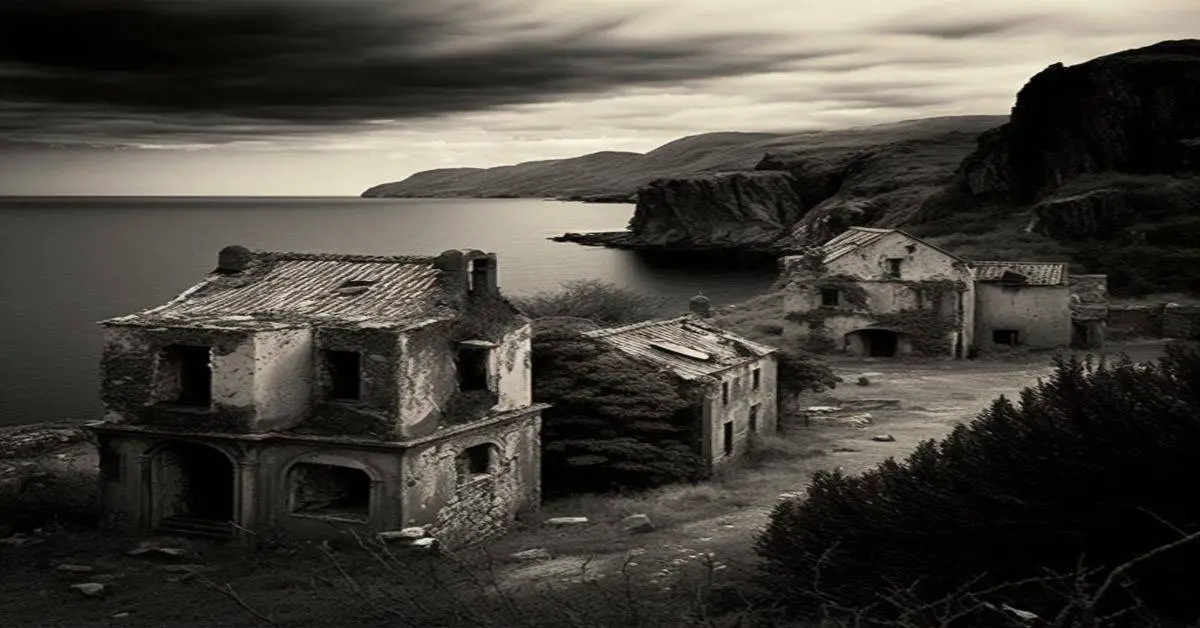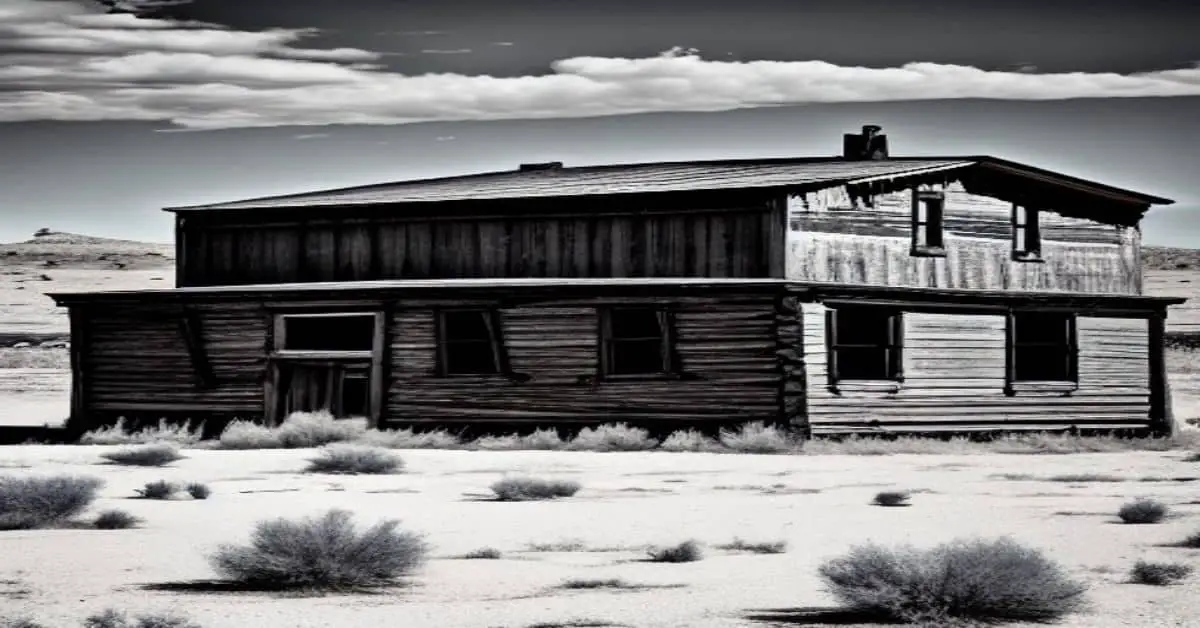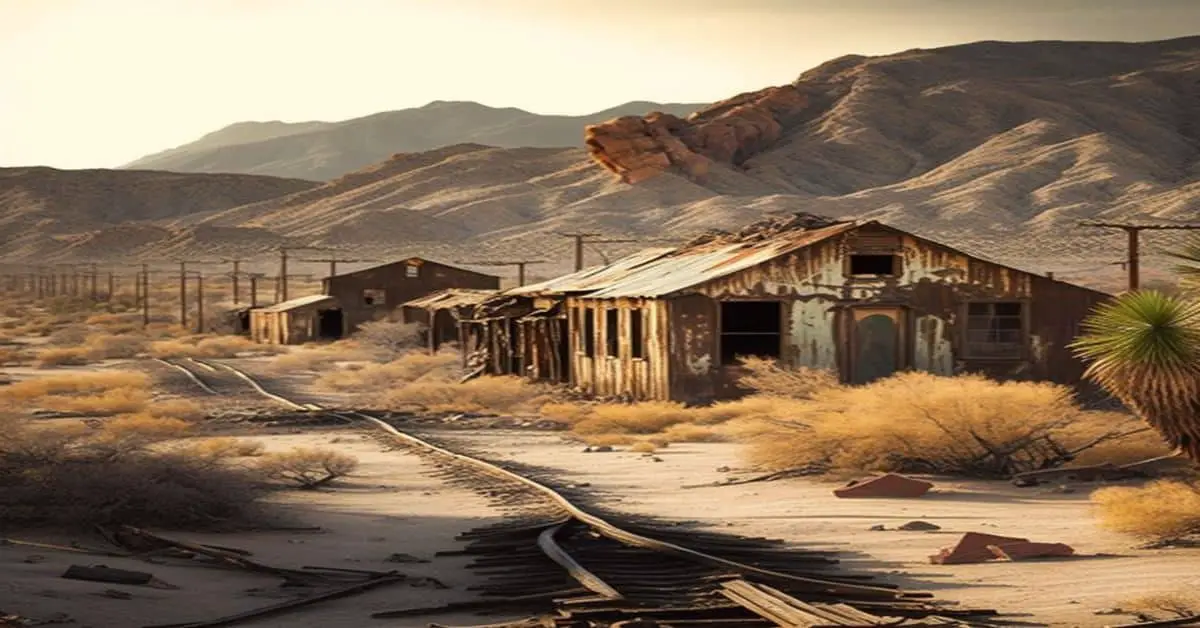Despite its abandonment for years, the ghost town of Fort Rock in Arizona continues to draw curious visitors seeking to uncover its haunting past. Some may be skeptical about visiting a deserted town, but Fort Rock’s historical significance and eerie charm make it an intriguing destination.
The only remaining structure, Thad Buckman’s stone house, was once a thriving stage station until it was attacked by Hualapai warriors in 1866. Located deep in the heart of Arizona, Fort Rock’s significance lies in its connection to the region’s history and the bravery of young Thad Buckman during the attack.
Fort Rock’s remains offer a glimpse into the past and serve as a reminder of the struggles and conflicts that shaped the area. This article will delve into the history and significance of Fort Rock, as well as its current status as a tourist attraction.
By the end, readers will have a newfound appreciation for this haunting ghost town and its place in Arizona’s history.
Key Takeaways
- Fort Rock was once a thriving stage station attacked by Hualapai warriors in 1866, changing the town’s fate forever.
- The only remaining structure is Thad Buckman’s stone house, which serves as a haunting reminder of the town’s past and offers a fascinating glimpse into the past.
- Fort Rock’s historical significance and eerie charm make it a must-visit destination for anyone interested in Arizona’s abandoned towns and the history of the American West.
- Exploring Fort Rock’s mysteries can provide travelers with a deeper understanding of the people who lived and worked in the area and the challenges they faced.
Location and Remains
Fort Rock, located in Arizona on I-40 west, Exit 91, is a ghost town with only Thad Buckman’s stone house remaining. Yet, it holds historical significance due to the Hualapai attack in 1866 that resulted in the renaming of the stage station in honor of Thad’s playhouse.
Exploring Fort Rock’s mysteries can be an exciting adventure for travelers interested in history and the Wild West. The town’s remains offer a glimpse into the past, and visitors can uncover hidden artifacts that shed light on the way of life during the 1800s.
Fort Rock was once a bustling stage station that offered travelers a place to rest and refuel. However, the attack by Hualapai warriors in 1866 changed the town’s fate forever. Today, visitors can see the remains of the town and the stone house that served as a haven during the attack.
By exploring Fort Rock, travelers can gain a deeper understanding of the people who lived and worked in the area and the challenges they faced.
History and Significance
The historical significance of the site formerly known as a stage station in Arizona is rooted in the Hualapai Indian attack on Buckman stage station in 1866, which resulted in the renaming of the station to its current name, Fort Rock.
More than 50 Hualapai warriors attacked the stage station. Still, Buckman and another man managed to barricade themselves inside Thad Buckman’s stone house and exchange fire with the Indians for many hours. The exchange of fire resulted in the loss of many Indian warriors and showcased Buckman’s bravery, leading to the renaming of the station in his honor.
The attack strategy used by the Hualapai warriors on Buckman stage station has also contributed to the historical significance of Fort Rock. The Indians employed a classic hit-and-run strategy, attacking the station and then quickly retreating to avoid being overwhelmed by Buckman’s superior firepower.
However, their persistence and the fact that they were able to inflict damage on the station despite being outnumbered and outgunned by Buckman’s forces has made this attack a notable example of Indian resistance to white settlement in the American West.
Overall, the historical significance of Fort Rock lies in its association with this attack and its role in shaping the cultural and political landscape of the region.
Tourism and Status
Located along the historic Route 66, the abandoned remnants of Fort Rock continue to attract visitors from around the world, offering a glimpse into the rugged and untamed spirit of the American West.
As one of Arizona’s ghost towns, Fort Rock is a popular destination for those seeking to explore the state’s rich history. The town’s only remaining structure, Thad Buckman’s stone house, provides a haunting reminder of the town’s past, and visitors can imagine the intense exchange of fire that took place between Buckman and the Hualapai warriors during the attack on the stage station.
Despite its abandoned status, Fort Rock remains a tourist attraction, with visitors coming to explore the town’s history and experience the unique atmosphere of a ghost town. The town’s historical significance also adds to its appeal, with many visitors eager to learn about the events during its early years.
While much of the town has been lost to time, Fort Rock’s stone house and other remnants offer a fascinating glimpse into the past, making it a must-visit destination for anyone interested in Arizona’s abandoned towns and the history of the American West.
Frequently Asked Questions
What was the layout of Fort Rock town before it was abandoned?
The layout of Fort Rock town before it was abandoned is unclear due to the lack of remaining buildings. However, Thad Buckman’s stone house, the only remaining structure, provides insight into the architecture of the time.
Are there any ghost stories or paranormal activities associated with the town?
Paranormal sightings and local legends are not associated with Fort Rock, a deserted town in Arizona. Despite its historical significance and tourist attraction, there is no evidence of any ghost stories or supernatural activities in the area.
Fort Rock, originally a stage station, had economic significance as a stop for travelers and mail carriers. Its social significance lies in the bravery of Thad Buckman during a Hualapai attack. Today, its tourism potential outweighs its industrial impact.
Are there any plans to restore or preserve the remaining structures in Fort Rock?
Preservation efforts for the remaining structure of Thad Buckman’s stone house in Fort Rock, Arizona are unclear. Despite its historical significance and status as a tourist attraction, plans for restoration or preservation have not been reported.
What is the current state of the surrounding natural environment and wildlife in the Fort Rock area?
The current state of the natural environment and wildlife in the Fort Rock area is unclear. No recent studies have been conducted to assess the ecological impact or wildlife diversity. However, there is potential for tourism and conservation efforts in the area.


